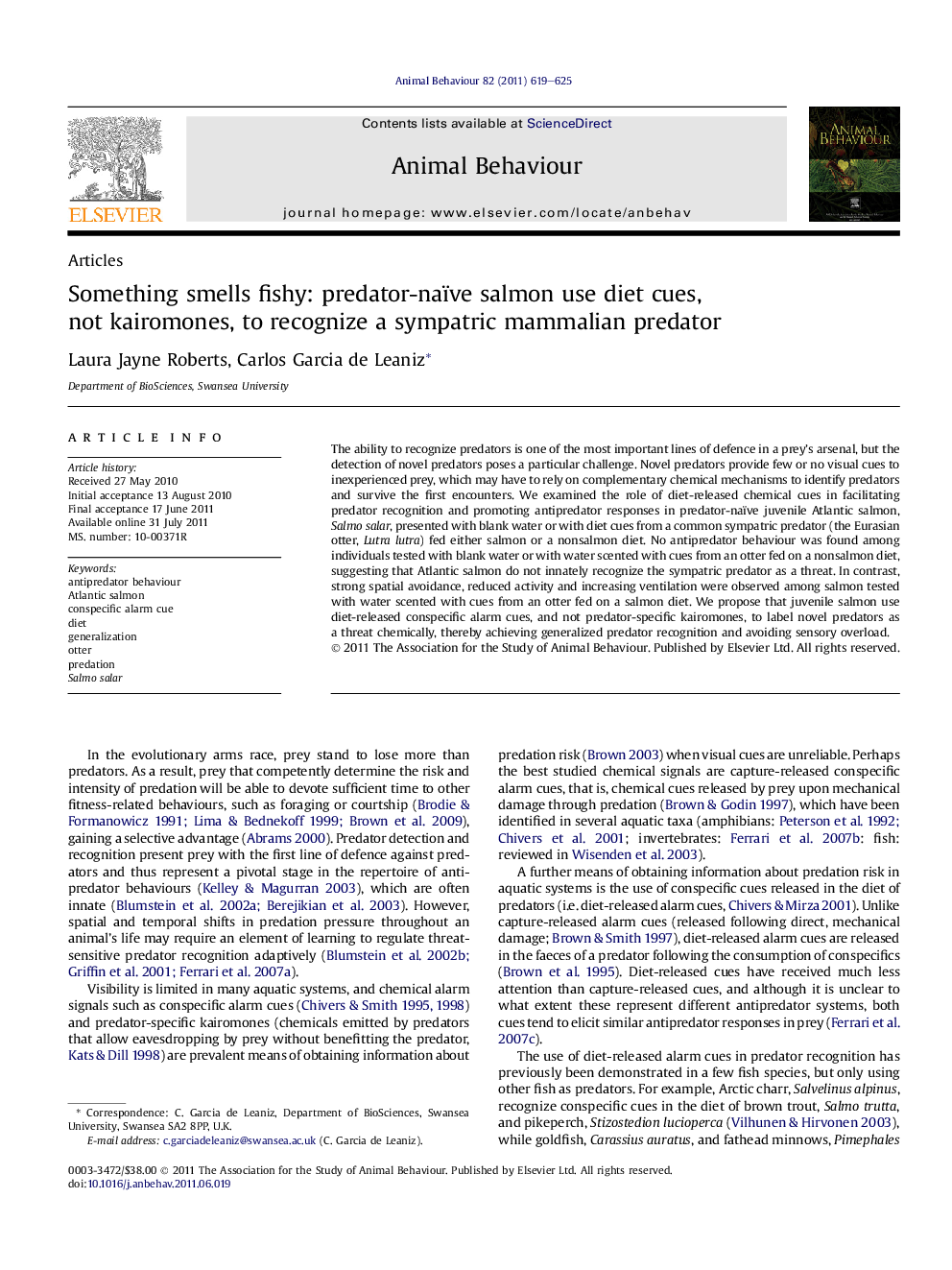| Article ID | Journal | Published Year | Pages | File Type |
|---|---|---|---|---|
| 2416626 | Animal Behaviour | 2011 | 7 Pages |
The ability to recognize predators is one of the most important lines of defence in a prey’s arsenal, but the detection of novel predators poses a particular challenge. Novel predators provide few or no visual cues to inexperienced prey, which may have to rely on complementary chemical mechanisms to identify predators and survive the first encounters. We examined the role of diet-released chemical cues in facilitating predator recognition and promoting antipredator responses in predator-naïve juvenile Atlantic salmon, Salmo salar, presented with blank water or with diet cues from a common sympatric predator (the Eurasian otter, Lutra lutra) fed either salmon or a nonsalmon diet. No antipredator behaviour was found among individuals tested with blank water or with water scented with cues from an otter fed on a nonsalmon diet, suggesting that Atlantic salmon do not innately recognize the sympatric predator as a threat. In contrast, strong spatial avoidance, reduced activity and increasing ventilation were observed among salmon tested with water scented with cues from an otter fed on a salmon diet. We propose that juvenile salmon use diet-released conspecific alarm cues, and not predator-specific kairomones, to label novel predators as a threat chemically, thereby achieving generalized predator recognition and avoiding sensory overload.
